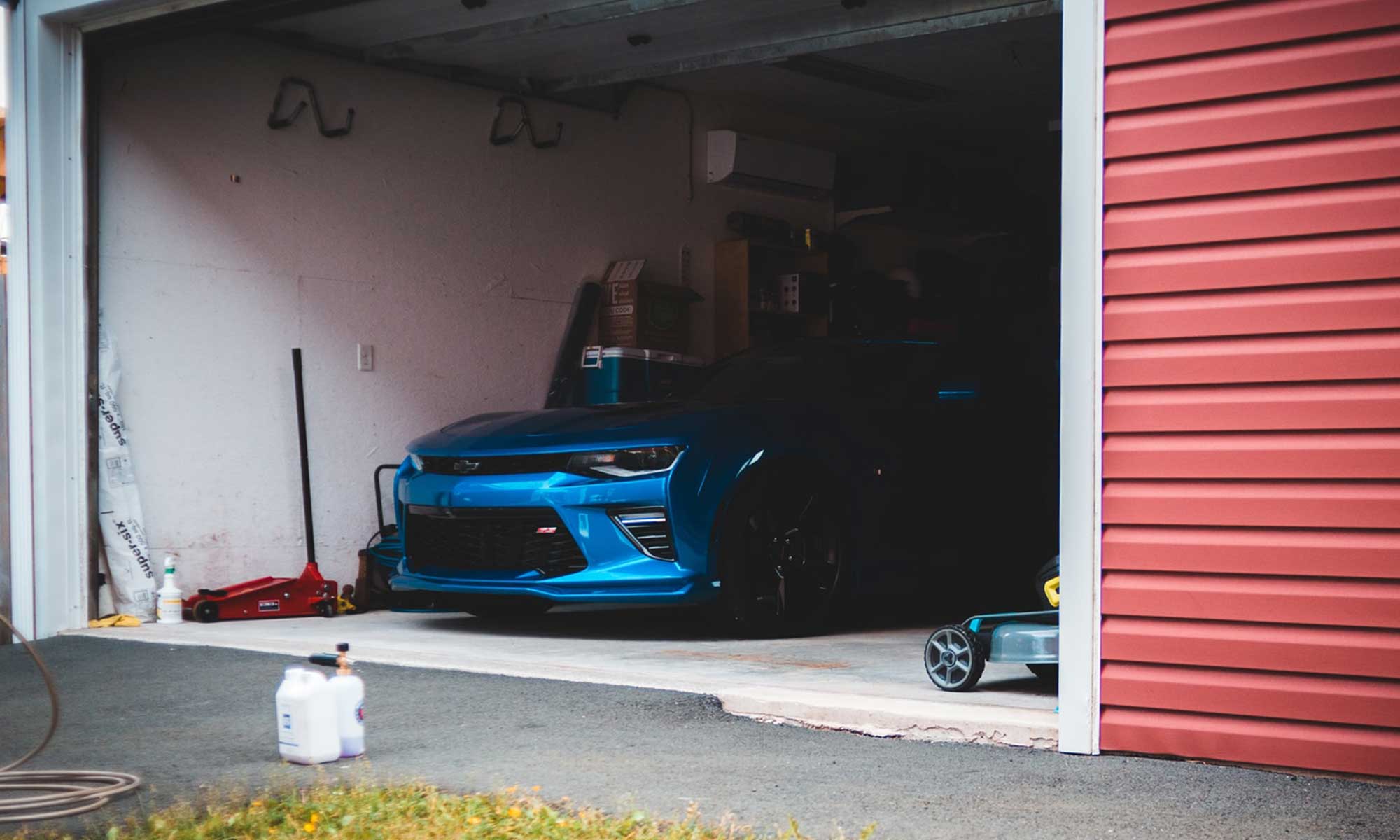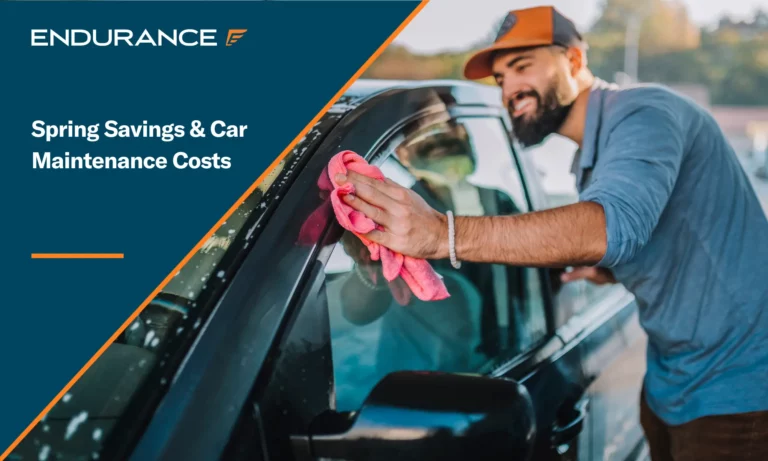Get this deal! Call now.
Speak with a vehicle protection plan specialist and get $300 off any new contract instantly.
Call 866-678-4172
While it’s relatively common to leave a car unused for prolonged periods due to changing circumstances, your vehicle still requires a certain level of preventative maintenance to keep it running properly. So no matter the reason you need to take your car off the road, taking some time to care for your vehicle can help you avoid a breakdown in the future.
First of all, you’ll need to choose a suitable place to store your vehicle. If you have a garage, this is the best choice as it will provide shelter from the elements. You can also look at using heaters in unseasonably cold weather. Not everyone has a garage, though, so if you’re keeping your car outdoors, like on a driveway, you can still protect it from the worst of the weather with a suitable car cover.
And while there’s a cost involved, using a storage facility is another safe and sheltered option. Look for one that has climate control and is not too far away, so you can check your vehicle periodically.
When storing your vehicle, you’ll want to protect the bodywork and make sure no dirt’s eating away at it. Getting a thorough car wash beforehand can ensure bodywork issues, such as rust or chips, are remedied before letting your car sit for an extended period of time.
If you’re looking to wash your vehicle at home, you’ll need a few items. Grab a bucket, a sponge, car shampoo, and a pair of gloves, and start at the top before working your way down, doing the wheels last. Once you’ve washed the car, apply a protective coating—wax is a good option, but a ceramic coating or a film is even better and will prevent moisture from getting in. You can also check out more tips on protecting the paintwork here.
If water gets in the fuel tank, you could get rust and engine problems. To prevent moisture from getting into the fuel tank, make sure you fill the tank up before putting the car in storage. You can also use a fuel stabilizer too. It’s simple to add, and it can help keep your fuel fresh and improve general lubrication.
Air pressure (PSI) in tires fluctuates when there are changes in temperature, which can affect your tires’ lifespan.
Just fill it to the recommended, not more, as this could overstress the tires, reducing their lifespan. You can check the psi recommended by the manufacturer by consulting your owner’s manual or by checking the sticker on the inside of the driver’s door (or sometimes behind the fuel cap). A simple tire pressure gauge tool is well worth the investment and means you can carry out this task at home when the tires are cold for a more accurate reading. Be aware of possible flat spots as well, which can happen when your vehicle is stationary for long periods of time. To help, simply just drive your vehicle at least once every week if able.
You can also get tire protection with the help of an Endurance auto protection plan and an entire year’s worth of Elite Benefits. Simply choose the Endurance plan that’s right for your needs and budget, pay a $29 activation fee and enjoy a full year of perks and savings, including up to two tire replacements or repairs, as well as key fob replacements, collision discounts and even total loss protection.
You want to make sure your engine stays well lubricated and prevent any moisture from getting in that could cause corrosion. Check and top up what needs to be topped up, such as brake fluid, transmission fluid, power steering fluid, engine coolant, and windshield wiper fluid. If you’re storing your vehicle over winter, especially if it’s going to be left outdoors, make sure you have enough antifreeze in the coolant mix and in the windshield washer fluid.
For optimal long-term storage, it’s good to change the oil too. This is because old, contaminated oil can cause damage to your engine. Oil changes are commonly overlooked due to financial reasons and busy schedules, but taking some tips to get this done is essential to keeping you on the road longer. You can also take your vehicle for a drive around the block to get the fresh fluids circulating around the engine and cooling systems. This will help everything stay lubricated while the car’s in storage.”
Looking for a way to save on oil changes? Look no further! With the Advantage protection plan from Endurance, you can get extensive breakdown coverage PLUS savings of up to $3,500 in routine car maintenance, including three oil and filter changes and much more.
If you’re going to be leaving the car outdoors, get yourself a suitable weatherproof cover to keep the elements out and your car protected.
It’s worth using a cover even if the car is in a garage as it can help keep the cold out and prevent the buildup of dirt, as well as provide some protection from pests. If pests nest in your car, you could be facing costly repairs to remove them and fix the damage when you come to use your car again.
Keeping pests out of your car starts with a deep cleaning of the interior, removing any wrappers, sticky residue, and other trash. Blocking up potential entry points such as the air vents and exhaust with something like steel wool can also help keep those pesky critters out.
When you’re ready to take the car out of storage, you’ll need to get it ready for the road again. Here’s a checklist to keep on hand-curated by our experts to properly maintain your vehicle.
Owning a vehicle can get expensive between essential car care and maintenance, sudden breakdown, and repair costs you hadn’t factored in. But with an extended auto warranty or vehicle service contract, such as Advantage, you can save thousands on both repairs and essential maintenance—and enjoy peace of mind.
Each Advantage protection plan offers up to $3,500 in maintenance coverage like oil and filter changes, alignment checks, engine diagnostic exams and more. Plus, each Advantage plan comes with several other special, one-time services, including a battery replacement, a brake pad/shoe replacement, a front or rear wiper blade set replacement, and more. The fully customizable plan means there’s something for everyone, whether customers have a high-mileage vehicle or a car with advanced tech.
Call a member of the award-winning Endurance customer care team or request a no-obligation quote today to learn more about how an Endurance auto protection plan can help you. You can also find even more comprehensive and informative articles on other automotive topics such as expert auto tips, vehicle buying guides, extended warranty comparison and more by visiting the Endurance blog.

It’s no surprise to anyone who’s been car shopping recently that automobiles are expensive. The average new car costs $48,000, while the typical pre-owned car costs about $25,600. These are..

The arrival of spring signals a time for renewal, fresh starts, and new projects. One effort to add to your task list is getting your car in shape after winter...

Winter driving can be tough on your car and its components. Subzero temperatures and inclement weather push vehicles to their limits, so when spring rolls around, it couldn’t be a..

Your protection is our top priority. Your quote is in progress and you will
receive a confirmation
email shortly.

We're here to make sure you get the most comprehensive EV protection. That's why we've partnered with Xcelerate Auto to offer you transparent and dependable Tesla coverage.
Want us to contact you about XCare coverage for your Tesla?



Sign up and get $300 off your new contract!
By clicking the button, you consent to Endurance using automated technology to call, email, and text you using the contact info above, including your wireless number, if provided, regarding auto protection or, in California, mechanical breakdown insurance. You also agree to the Endurance Privacy Policy and Terms and Conditions. Consent is not a condition of purchase, and you can withdraw consent at any time. Message and data rates may apply.
Speak with a vehicle protection plan specialist and get $300 off any new contract instantly.
Call 866-678-4172

Simply fill out the information below and we will follow up fast with your free no-obligation quote.
By clicking the button, you consent to Endurance using automated technology to call, email, and text you using the contact info above, including your wireless number, if provided, regarding auto protection or, in California, mechanical breakdown insurance. You also agree to the Endurance Privacy Policy and Terms and Conditions. Consent is not a condition of purchase, and you can withdraw consent at any time. Message and data rates may apply.
Since the age of 16, Keith has been immersed in the automotive industry, beginning his career by helping his dad fix vehicles at a young age. Keith now owns his own family-run, ASE Certified repair shop, A+ Autocare. At his shop, he focuses on building trusting relationships with his community through exceptional customer service. Read more about Keith.